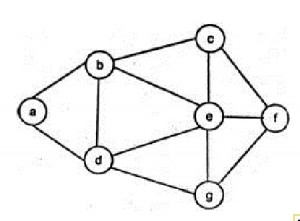Top MCQs on Tree Traversal with Interview Question and Answers | DSA Quiz
Question 21
Question 23
A complete n-ary tree is one in which every node has 0 or n sons. If x is the number of internal nodes of a complete n-ary tree, the number of leaves in it is given by
Question 24
Which of the following sequences denotes the post order traversal sequence of the given tree?
a
/ \\
b e
/ \\ /
c d f
/
g
Question 26
The post-order traversal of a binary search tree is given by 2, 7, 6, 10, 9, 8, 15, 17, 20, 19, 16, 12.
Then the pre-order traversal of this tree is:
Question 27
Let G be a simple undirected graph. Let TD be a depth first search tree of G. Let TB be a breadth first search tree of G. Consider the following statements. (I) No edge of G is a cross edge with respect to TD. (A cross edge in G is between two nodes neither of which is an ancestor of the other in TD). (II) For every edge (u, v) of G, if u is at depth i and v is at depth j in TB, then ∣i − j∣ = 1. Which of the statements above must necessarily be true?
Question 28
Suppose the numbers 7, 5, 1, 8, 3, 6, 0, 9, 4, 2 are inserted in that order into an initially empty binary search tree. The binary search tree uses the reversal ordering on natural numbers i.e. 9 is assumed to be smallest and 0 is assumed to be largest. The in-order traversal of the resultant binary search tree is
Question 29
The in-order and pre-order traversal of a binary tree are d b e a f c g and a b d e c f g respectively. The post order traversal of a binary tree is
Question 30
Consider the following tree
 If the post order traversal gives ab-cd*+ then the label of the nodes 1,2,3,… will be
If the post order traversal gives ab-cd*+ then the label of the nodes 1,2,3,… will be
 If the post order traversal gives ab-cd*+ then the label of the nodes 1,2,3,… will be
If the post order traversal gives ab-cd*+ then the label of the nodes 1,2,3,… will beThere are 42 questions to complete.
Last Updated :
Take a part in the ongoing discussion
